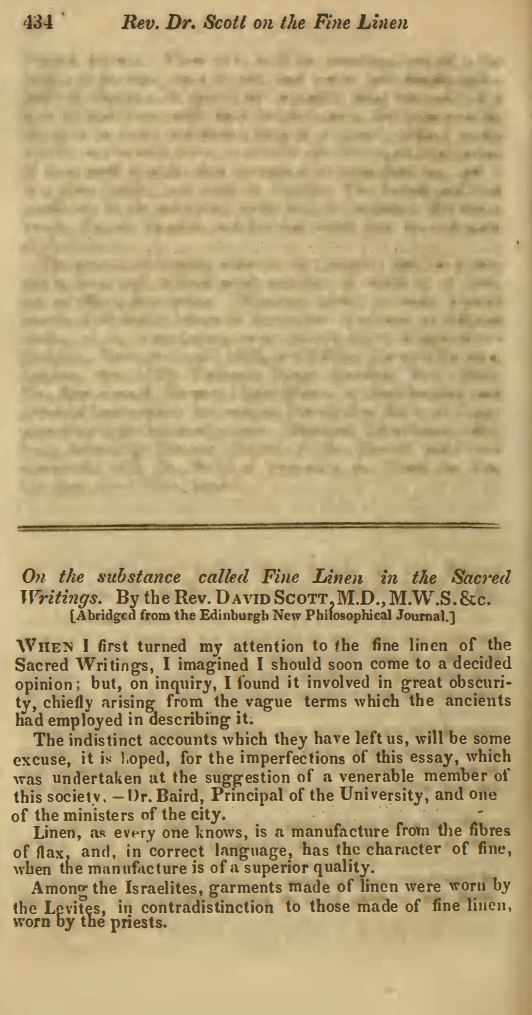On the substance called “Fine Linen” in the Sacred Writings
DOI:
https://doi.org/10.21504/saqj.14.2670Keywords:
Cotton in antiquity, Biblical textiles, Shesh (שֵׁשׁ), Ancient Egypt textiles, Hebrew Scriptures, Gossypium speciesAbstract
This article (abridged from the Edinburgh New Philosophical Journal) examines the material referred to as “fine linen” in the Sacred Writings and argues that its interpretation has long been obscured by inconsistent terminology in ancient sources. While commonly understood as high-quality flax-based linen, the author challenges this assumption and traces historical debates among translators and commentators, including Calvin, Junius, and Tremellius, who proposed that the term might denote silk or silk-like substances. Scott contends that these interpretations more closely align with cotton, a soft fibre produced by several plant species—Gossypium arboreum, Gossypium herbaceum, and Bombax ceiba—cultivated in regions such as Egypt, Palestine, and India.
Drawing on classical authorities such as Pliny, Ammianus, and Isidore, the article demonstrates how Greek and Roman writers frequently conflated cotton with linen, silk, or wool due to the limited technical vocabulary available at the time. Scott analyses the Hebrew term shesh, exploring its connection to whiteness and its application to various white materials, from textile fibres to marble. He further considers the limited presence of the word “cotton” in early English translations, noting that “fine linen” may have been used as an approximate rendering due to linguistic constraints at the time.
The article concludes that many garments described in the Hebrew Scriptures—particularly those associated with priests, persons of high rank, and burial practices—were likely made of cotton rather than flax-based linen. Evidence from Egyptian embalming traditions and classical descriptions supports the claim that cotton, not flax, is the more plausible referent of the biblical term translated as “fine linen.”
Downloads

